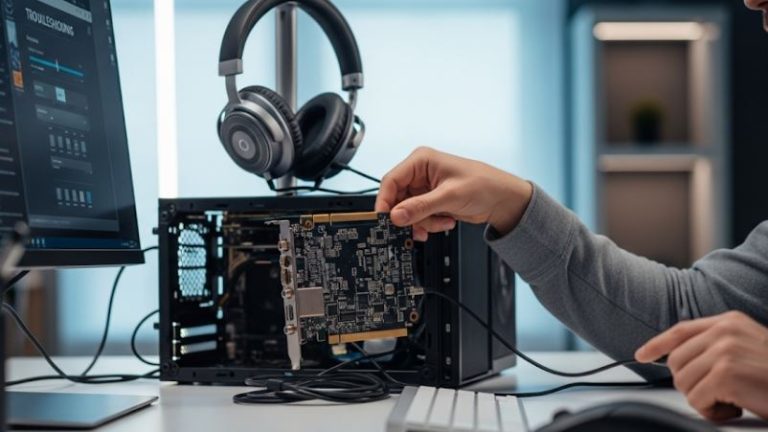
In an era of locked-down ecosystems and incremental software updates, the allure of taking full control of our devices has a certain mystique. For owners of older Android phones, those still running versions like KitKat, Lollipop, or even Marshmallow, the concept of rooting represents a gateway to a world of customization and enhanced functionality long since abandoned by manufacturers. But in 2025, with the mobile landscape having evolved so dramatically, a crucial question arises: is rooting these legacy devices still a viable mission?
This in-depth article will explore the intricate world of rooting older Android versions. We will delve into the reasons why one might embark on this journey, the tools and techniques that were once commonplace, and the significant hurdles and security implications that exist today. This is not just a technical guide but a look at the philosophy behind device ownership and the enduring spirit of the Android enthusiast community.
🤔 Why even consider rooting an old Android device?
Before we dive into the „how,” it is essential to understand the „why.” With modern Android offering a plethora of features and a more secure environment out of the box, why would anyone bother with a device that is several generations old? The motivations are surprisingly compelling.
1. Reclaiming performance: Older Android versions, while less demanding than their modern counterparts, were often paired with hardware that was modest even at the time of release. Over the years, accumulated junk files, manufacturer-installed bloatware, and the general degradation of the software can bring these devices to a grinding halt. Root access is the key to uninstalling this unwanted software, freeing up precious RAM and storage, and allowing for performance-tuning tweaks that can breathe new life into a sluggish phone.
2. The world of custom ROMs: Perhaps the most significant advantage of rooting is the ability to install a custom ROM. Think of a ROM (Read-Only Memory) as the operating system of your phone. A custom ROM, developed by a community of dedicated programmers, can offer a more recent version of Android than the manufacturer ever provided. Imagine running a lightweight, debloated version of Android 10 on a phone that was officially abandoned at Android 5.0 Lollipop. This not only provides a fresh user interface but can also patch security vulnerabilities that were left unaddressed. Projects like LineageOS, while focusing on newer devices, still have archives and community builds for older hardware.
3. Unparalleled customization: Beyond custom ROMs, rooting allows for deep-level customization that is simply not possible on a stock device. From theming the entire user interface with frameworks like Substratum (on compatible versions) to installing powerful system-wide ad-blockers, the possibilities are vast. Do you want to change the functionality of your hardware buttons or recalibrate your screen’s color profile? With root, you can.
4. Advanced backup solutions: While Google’s cloud backup has improved, it pales in comparison to the comprehensive backup tools available to rooted users. Applications like Titanium Backup (a legendary name in the rooting community) allow you to create a complete snapshot of your device, including all applications, their data, and system settings. This makes migrating to a new phone (or recovering from a failed experiment) a seamless process.
5. Extending device lifespan: In a world increasingly concerned with e-waste, rooting an old phone is an act of sustainable tech. Instead of discarding a perfectly functional piece of hardware, you are extending its useful life, saving money, and reducing your environmental footprint.
The rooting landscape of yesteryear: A look back
To understand the challenges of today, we must first appreciate the relative simplicity of the past. In the early days of Android (from Froyo to KitKat), the security measures in place were far less stringent than they are now. This „Wild West” era gave rise to a plethora of „one-click root” applications that made the process incredibly accessible.
These tools often exploited vulnerabilities found within the Android operating system or the manufacturer’s specific software additions. Legendary names that veterans of the rooting scene will remember include:
- KingoRoot and KingRoot: These two applications (from different developers) were incredibly popular for their ease of use. You would simply install the APK on your phone, press a button, and the software would attempt a variety of exploits to gain root access. While convenient, they often installed their own proprietary superuser management apps and raised some security concerns in the community.
- Framaroot: This ingenious app contained several named exploits based on characters from „The Lord of the Rings,” such as „Gandalf” and „Aragorn.” Users could select an exploit, and if their device was vulnerable, root access was granted almost instantly.
- Towelroot: Developed by the famous hacker George Hotz (Geohot), Towelroot used a vulnerability in the Linux kernel to gain root access on a vast number of devices with a single tap. It was a game-changer at the time.
The process was often straightforward: enable „Unknown sources” in the security settings, sideload one of these APKs, run the application, and within minutes, you would be prompted to install a superuser management app like SuperSU. This application would then act as a gatekeeper, allowing you to grant or deny root access to other apps that requested it.
The modern reality: Is it still possible?
So, can you still use these methods today? The answer is a resounding maybe. It is highly dependent on the specific device, its Android version, and its security patch level.
The diminishing returns of one-click roots: Many of the vulnerabilities that these one-click root apps exploited were patched by Google and manufacturers years ago. If you have an old phone that was updated to the latest possible software version provided by the manufacturer, there is a good chance that these simple methods will fail. The servers that some of these apps relied on may also no longer be active.
However, if you have a device that has been sitting in a drawer for years and never received those later security updates, there is a higher probability that it remains vulnerable to these older exploits. The key is the software’s age, not just the hardware’s.
The timeless method: Unlocking the bootloader and custom recovery
For those who find the one-click root methods ineffective, the more traditional and reliable path to rooting remains the most viable option. This method is more involved but offers a much higher chance of success. It generally involves two key steps:
Step 1: Unlocking the bootloader
The bootloader is the first piece of software that runs when you turn on your phone. It is responsible for loading the Android operating system. Most manufacturers lock the bootloader to prevent users from modifying the system software. Unlocking the bootloader is the crucial first step, as it allows you to flash custom images, such as a custom recovery.
The process for unlocking the bootloader varies wildly between manufacturers.
- Nexus and Pixel Devices: Google’s own devices have always been the most developer-friendly. Unlocking the bootloader is often as simple as enabling an option in the developer settings and running a single command (
fastboot oem unlock) from a computer. - Other Manufacturers (Sony, HTC, Motorola): Many other manufacturers have historically provided official methods for unlocking the bootloader through their developer websites. This usually involves creating an account, providing your device’s IMEI number, and receiving an unlock key.
- The Locked-Down Brigade (Samsung, Huawei): Some manufacturers, particularly on their carrier-branded models, make it notoriously difficult or impossible to unlock the bootloader. For these devices, the rooting journey often ends before it can even begin.
⚠️ Important Note: Unlocking the bootloader will almost always perform a factory reset on your device, wiping all of your personal data. Back up everything you care about before you begin.
Step 2: Flashing a custom recovery
Once the bootloader is unlocked, the next step is to replace the stock recovery environment with a custom recovery. The recovery is a separate, bootable partition that allows for system maintenance tasks. A custom recovery, such as the legendary Team Win Recovery Project (TWRP), provides a powerful, touch-based interface that allows you to:
- Create full system backups (known as Nandroid backups).
- Flash custom ROMs, kernels, and other modifications in the form of ZIP files.
- Wipe different partitions of your device (cache, dalvik cache, etc.).
- Access a file manager to modify files on your device’s storage.
Flashing TWRP usually involves booting your phone into bootloader/fastboot mode, connecting it to a computer, and using the fastboot command (fastboot flash recovery twrp.img) to overwrite the stock recovery with the TWRP image file.
Step 3: Gaining root access
With a custom recovery installed, the final step is to flash a root management package. For many years, the standard was SuperSU. However, in recent years, the community has largely shifted to Magisk.
Magisk is a modern, „systemless” rooting solution. This means it achieves root access without modifying the system partition. This has several advantages:
- It is easier to hide root access from apps that might refuse to run on a rooted device (such as banking apps or certain games).
- It allows you to continue receiving official Over-The-Air (OTA) updates in some cases (though this can be tricky).
- It supports a modular system, allowing you to install various system modifications (modules) without permanently altering the system files.
The process is simple: download the Magisk ZIP file, boot into your custom recovery (TWRP), and flash the ZIP. Upon rebooting, you will have the Magisk app installed, which will manage root permissions for your applications.
Hurdles and considerations in 2025
Embarking on a rooting journey with an old device is not without its challenges. Here is what you need to be prepared for:
- Information Scarcity: The golden age of Android development forums like XDA Developers, while still a valuable resource, has seen a decline in activity for older devices. Guides may be outdated, links may be broken, and the files you need (like specific drivers or recovery images) may be difficult to find. You will need to become a digital archaeologist, sifting through old forum posts and archived websites.
- Hardware Failure: We are dealing with old electronics. Batteries may have degraded significantly, and storage components can fail. The process of rooting itself puts a strain on the device, and there is always a small but real risk of „bricking” the phone—rendering it unusable.
- Security Risks: This is the most critical consideration. An old, rooted Android device is inherently less secure than a modern, unrooted one. You will likely be running a version of Android with unpatched security vulnerabilities. While a custom ROM might bring a more recent security patch level, it is unlikely to be fully up-to-date. Using a rooted old phone for sensitive tasks like mobile banking or accessing corporate email is highly discouraged. For a deeper understanding of mobile security, exploring resources from organizations like the Electronic Frontier Foundation (EFF) can provide valuable context.
- Driver and Compatibility Issues: Getting an old phone to communicate properly with a modern computer (running Windows 11 or the latest macOS) can be a significant challenge. You may need to hunt down specific ADB (Android Debug Bridge) and Fastboot drivers and potentially use older versions of these tools to establish a stable connection.
🚀 The final verdict: Mission possible, but proceed with caution
So, is rooting an older Android version still a mission possible in 2025? Absolutely, yes. For the determined enthusiast, the tinkerer who loves a challenge, or the individual looking to give an old piece of tech a new purpose, the path is still there. The traditional method of unlocking the bootloader, flashing a custom recovery like TWRP, and then using Magisk remains the most reliable and recommended approach.
However, the mission has changed. It is no longer a simple one-click affair. It requires patience, a willingness to do thorough research, and a clear understanding of the risks involved. You are not just modifying a device; you are engaging in a piece of technological history, navigating the digital remnants of a more open and experimental era of mobile computing.
Treat your old, rooted device as a secondary gadget. Use it to experiment with custom ROMs, learn about the inner workings of Android, or turn it into a dedicated media player, retro gaming console, or smart home controller. By doing so, you can enjoy the immense satisfaction of unlocking its full potential while keeping your primary, secure device for your daily digital life. The mission, should you choose to accept it, is a rewarding one.
Disclaimer: This article is for informational purposes only. The procedures described, such as rooting, involve significant risks, including but not limited to data loss, device malfunction („bricking”), and voiding your warranty. The author and the publisher of this article cannot be held responsible for any damage that may occur to your device as a result of following the information provided. Proceed at your own risk.















